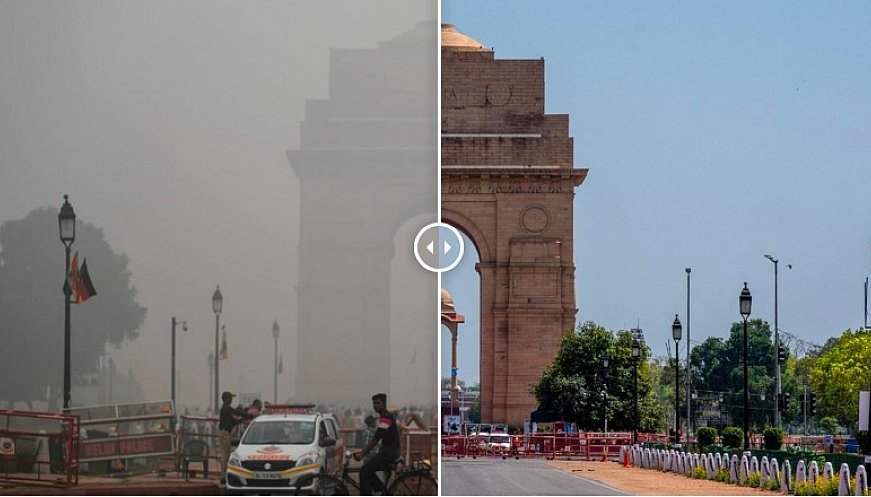
The lockdown was designed to stop the imminent spread of the novel coronavirus. But grinding this country of 1.3 billion people to a near halt has also provided a temporary remedy to another pressing health issue: suffocating pollution levels.The world's largest lockdown means all factories, markets, shops, and places of worship are now closed, most public transport suspended and construction work halted. Already, data shows that the main cities are recording much lower levels of harmful microscopic particulate matter known as PM 2.5, and of nitrogen dioxide, which is released by vehicles and power plants. In the capital, New Delhi, government data shows the average concentration of PM 2.5 plunged by 71% in the space of a week -- falling from 91 microgram per cubic meter on March 20, to 26 on March 27, after the lockdown began. The World Health Organization considers anything above 25 to be unsafe. "I have not seen such blue skies in Delhi for the past 10 years," said Jyoti Pande Lavakare, the co-founder of Indian environmental organization, Care for Air.
More:














